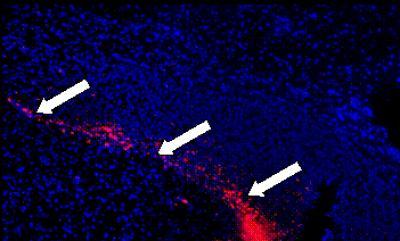Glioblastoma is the most common ma-lignant primary brain tumor in adults. The aggressive growth manner, characterized by marked angiogenesis and extensive tumor cell invasion into normal brain parenchyma with frequent formation of tumor microsatellites at distal sites, makes eradication impossible even after extensive microsurgical resection combined with current standard chemoradiation and adjuvant temozolomide. Thus, novel therapeutic strategies must to be investigated for the development of a more effective treatment strategy. Stem cell-based therapies are emerging as novel cell-based delivery vehicle for therapeutic agents. Prof. Qingjun Zhang and team from the Department of Neurosurgery, Peking University People's Hospital proposed that umbilical cord mesenchymal stem cells may have similar targeting capabilities for glioma. The researchers found that human umbilical cord mesenchymal stem cells demonstrated excellent glioma-specific targeting capacity in established rat glioma models after intratumoral injection or contralateral ventricular administration in vivo. These findings were published in the Neural Regeneration Research (Vol. 8, No. 22, 2013).

After contralateral ventricular administration, DiI-labeled umbilical cord mesenchymal stem cells migrated from the initial injection site towards the glioma (arrows), mainly distributing along the interface of tumor and normal brain parenchyma.
(Photo Credit: Neural Regeneration Research)
Source: Neural Regeneration Research